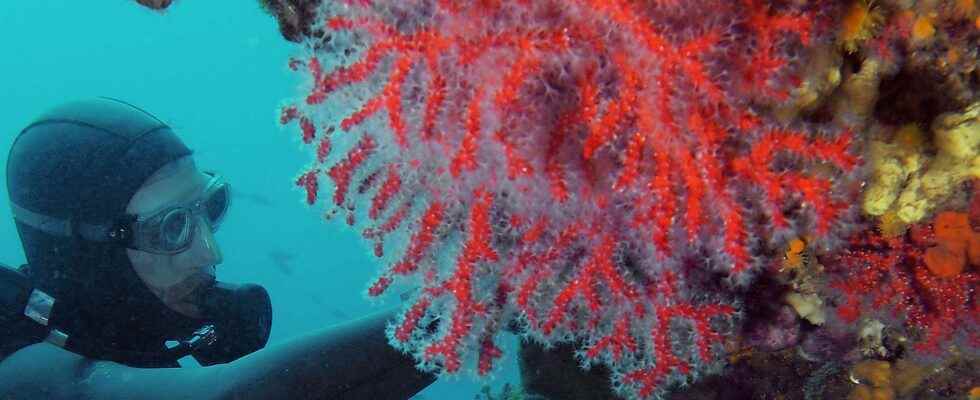Almost all corals have disappeared in some areas of the Mediterranean Sea. In question, the heat waves that have followed one another since 2003.
You will also be interested
[EN VIDÉO] Why some corals suddenly turn fluorescent When subjected to pollution or water that is too hot, coral undergoes bleaching which often results in its death. But it has an ultimate means of defence: producing fluorescent pigments that act like a “sunscreen” to protect it from light and attract symbiotic algae.
A study of the University of Barcelona and the Institute of Marine Sciences from the same city reveals that the climate crisis has wiped out 80-90% of coral populations in certain areas of the Mediterranean. The waves of heat, which can last from a few days to several weeks, mainly cause the death of two species emblematic corals of Mediterranean reefs: red gorgonians (Paramuricea clavata) and red coral (Corallium rubrum).
These animal species, which live between 10 and 100 meters deep, are endemic of the Mediterranean. They provide essential habitat for wildlife local and red coral is also widely used in jewelry and pharmaceuticals.
In this area, 80 to 93% of the red coral biomass disappeared following the heat peak of summer 2003
The study shows that each heat wave cause mortality of mass in corals, even though these organisms are capable of living more than 100 years in good conditions. Their growth is very slow and does not allow to adapt to such extreme fluctuations in temperature. The University of Barcelona has particularly studied the consequences of 2003 european heatwave in the Scandola nature reserve in Corsica, listed as a UNESCO World Heritage Site.
The researchers observed the evolution of the density and size of the corals, but also the structure of the biomass during the 15 years following the heat wave August 2003. The observations are overwhelming: most coral populations in the reserve have perished within a few years, and many species in the reserve are now considered extinct. In this area, 80 to 93% of the red coral biomass disappeared following the heat peak of summer 2003.
Heat waves have been too frequent since 2003
The 2003 heat wave was not the only extreme event to have dramatic consequences on theecosystem sailor in the Mediterranean: it is the recurrence of heat waves, between 2003 and 2020, which devastated the coral population. Because even when they survive a heat wave, once they deteriorate, these very slow organisms take several years to recover. However, after 2003, the succession of four major heat waves in the Mediterranean (2009, 2016, 2017, 2018) did not give damaged organisms time to heal and start growing again.
The majority of those who survived the summer of 2003 therefore perished in the heat waves that followed. The research team points out that the reaction of corals to heat waves varies greatly depending on their location: some corals benefit from a privileged location less affected by the rise in temperature.
The conclusions of the University of Barcelona remain alarming: with the multiplication of heat waves predicted by the IPCC, coral populations will continue to plummet. The researchers point out that the importance of corals in the sea is equivalent to that of forests on Earth. These organisms are essential to the functioning of marine ecosystems and also act as a mitigating barrier. the effect of coastal waves in the event of a storm.
Interested in what you just read?
